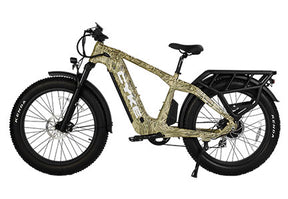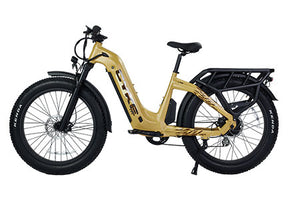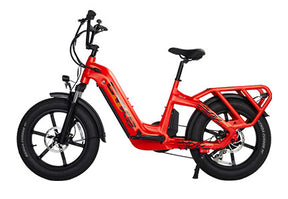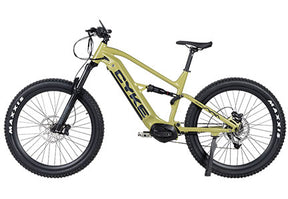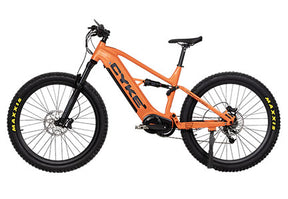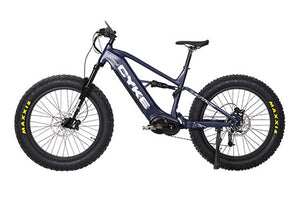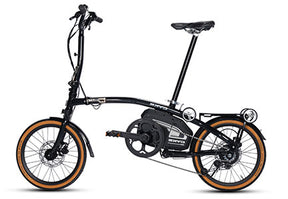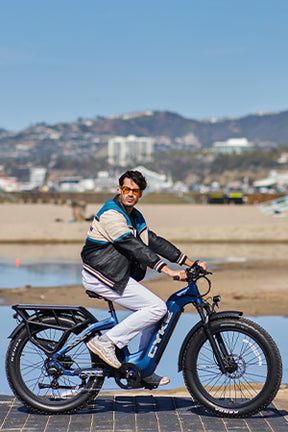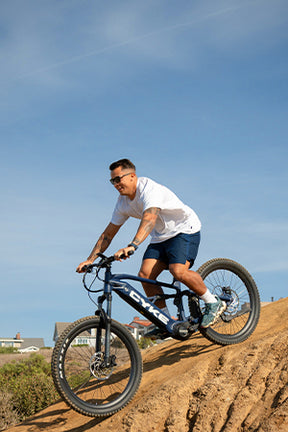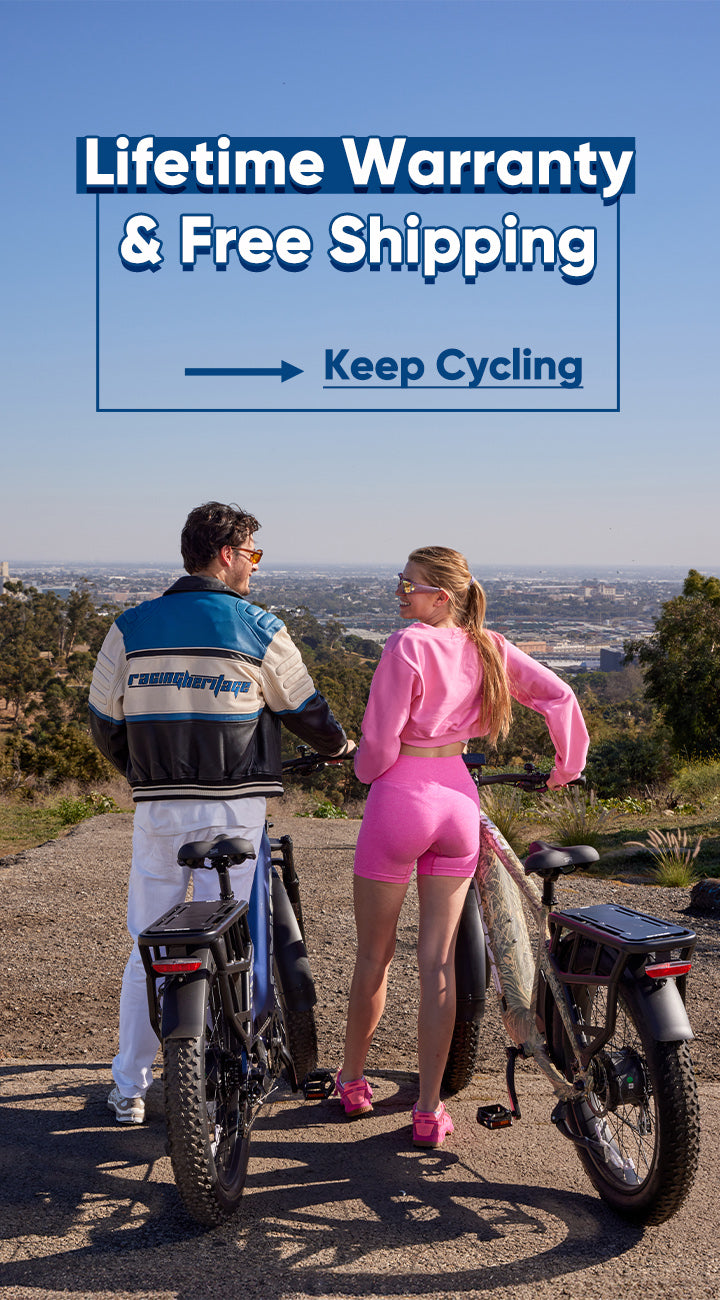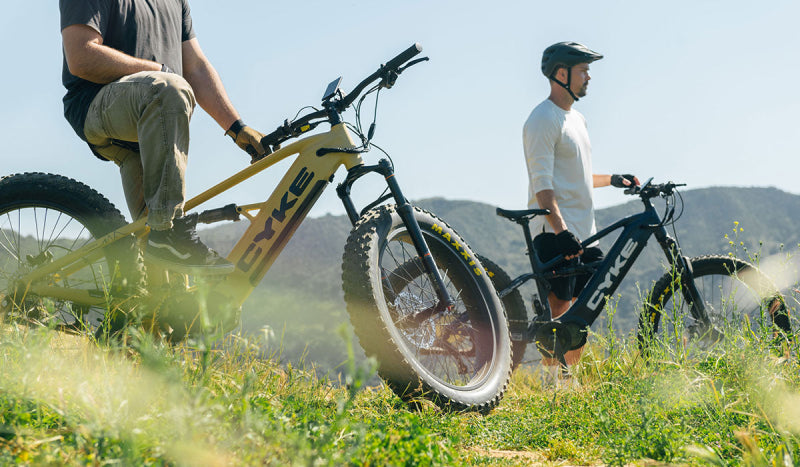Featured in this posts
Quick Start Guide of the Ebike Components
Understanding Ebike Components
Ebikes are the advanced form of bikes, but they differ in terms of components, as ebikes consist of many parts such as the battery, motor, controller, and many other main parts and accessories. These bicycles operate according to the movement of the handles and pedal like a regular bicycle, but there are many electrical components that work together to help you control these ebikes, and the most important component is the ebike motor that operates the bike and the battery, which in turn works to push energy and power to the ebike motor.
Ebikes are available in a variety of types, including hybrid, cruiser, and mountain. Each type is tailored to a particular terrain and style of ride. But different types of ebike also are made from similar kinds of important electric components, let’s dive in and learn more about these components and how they work.

What Are The Key Components Of an Ebike?
- Electric motor
There are several different types of electric motors an ebike can have. The first type is the front hub motor, which is located on the front frame and moves the bike forward by rotating the front wheel, creating a drag sensation.
As for the second type, it is a mid-drive motor that operates the bicycle’s transmission system and is positioned in the center of the ebike. This motor can create a natural feeling that is usually felt when people ride a regular bike.
Never forget the other type, which comes in the form of a rear axle motor located on the rear part of the frame. This type of motor moves the bike forward by rotating the rear wheel.
- Battery pack
Modern ebikes use lithium-ion batteries due to their electrical stability, storage capacity, longevity, and lightweight. Ebike batteries are commonly rated by Watt-Hours. Common ratings range from 280 Wh to 672 Wh but can go even higher. To give you an idea of the range you can expect from a fully charged battery, you can use a very basic calculation: If your bike has a 250-watt motor and a 360 Wh battery, you'll be riding at the highest assist level. Up to 1.4 hours of use from the ebike before needing to charge the ebike battery again. Many variables can increase or decrease this range (wind and terrain conditions, the amount of pedaling force you provide, the assistance level you choose, and carrying additional weight on the bike.
- Controller
The ebike's controller is an electronic device responsible for managing and controlling various functions of ebike. Its main role is to regulate the power output from the battery to the electric motor, allowing the rider to control the speed and assistance level of the ebike. It acts as the brain of the ebike's electrical system, processing input signals from various sensors and sending corresponding commands to the motor.
The controller typically consists of a microprocessor, which is the central processing unit (CPU) that handles the calculations and logic required for efficient operation and modulates the power flow between the battery and the motor. The controller receives input signals from the rider, such as throttle or pedal-assist sensor data, and interprets them to generate the appropriate power output. For example, if the rider wants to accelerate, the controller increases the power sent to the motor. On the other hand, if the rider wants to slow down or stop, the controller reduces the power flow.
Furthermore, the ebike's controller may incorporate additional features like a display panel or LED indicators to provide information to the rider, such as current speed, battery level, and selected assistance mode. Some controllers also have advanced functionalities, including regenerative braking, which allows the motor to act as a generator and recharge the battery while braking.
Overall, the ebike's controller plays a crucial role in ensuring a smooth and efficient electric riding experience by managing the power delivery and providing control options to the rider.
- Drivetrain Components
An electric bike drivetrain refers to the components that transfer power from the electric motor to the rear wheel of the bike, propelling the bike forward. The driving system includes the motor, pedals, chain, chainset, cassette and gearbox. There are two main types of ebike motors for adults: mid-drive and hub-drive. These motors indicate the efficiency of any electric bike and ensure better comfort for the riders.
Mid-drive systems have the motor in the center of the electric bike near the pedals. The ebike motor drives the chain which drives the chainring and then the rear cassette. Mid-drive systems allow the rider to use the bike's gear to adjust pedaling effort and optimize engine power output. Furthermore, it also allows the rider to take advantage of the bike's full suspension and apply force equally to both wheels. However, intermediate drive systems are more expensive and require more maintenance.
Hub-Drive systems have a motor located in the rear wheel hub. Power is transmitted to the wheel through a belt or chain drive. Hub-drive systems are generally simpler and easier to maintain because there are fewer moving parts.
- Braking system
As for the braking system, the hydraulic disc brakes of the electric bike are designed with precision and efficiency in mind. These brakes have a pressurized fluid system and are sealed on the outside. Releasing the lever changes the fluid pressure, forcing the brake pads to lock onto the braking surface and provide strong braking power.
- Display
Almost all complete ebike kits these days include a fairly detailed display to provide a dashboard to see what's going on. This is a great improvement from the early days of ebikes when most systems only had a few LEDs to indicate ebike battery level.
But unlike computer monitors or TVs which have a standard protocol, displays that connect to ebike motor controllers have no standardization at all either in function or communication bus (I2C, Canbus, LIN, UART, etc.), or communication protocol. Ebike’s displays are generally developed coupled to a specific engine controller and for a specific set of group functions, and you will rarely be able to switch to a different type of engine controller and have it work with your display, or conversely, find a replacement display for your controller. Thus, it’s pretty important to find a reliable display together with a high-quality controller.
Basic Frame Components
When it comes to ebike's construction, understanding the fundamental frame components is essential. These components not only ensure stability and support but also enhance the riding experience on various terrains. Let's check out more.
Front Fork
Forks are the piece of equipment that attaches the front wheel to your bike, but they are much more than that. They provide cushioning when hitting bumps and bumps, help you handle rough terrain, and the type of fork you have can completely change your riding experience.
Handlebar
Ebike's handlebar is the steering control device for bicycles. It is the equivalent of the steering wheel of a vehicle and the rudder of a ship because it is often mechanically linked directly to a pivoting front wheel via a shank which in turn connects to the fork.
Bottom bracket
The bottom bracket is a component located at the junction where the bicycle frame's down tube and seat tube meet, near the crankset area. It serves as the interface between the ebike's frame and the crankset assembly and houses a set of bearings and a spindle that connects the bicycle's crank arms, pedals, and chainrings. The bottom bracket is responsible for providing stability and support to the crankset, ensuring smooth rotation and power transfer from the rider's pedaling motion to the drivetrain. It is a critical component in the efficient functioning of the eBike's propulsion system.
Head tube
The head tube is a part of the bicycle frame located at the front end, where the steering mechanism and front fork assembly are connected. It provides support and houses the headset, which consists of bearings, race cups, and a stem. The headset allows for smooth steering and controls the movement of the front fork and handlebars. The head tube plays a crucial role in the overall structural integrity and functionality of the ebike.
Down Tube
The down tube is a vertical section of the bicycle frame that connects the front of the bike, where the handlebars and fork are located, to the middle or bottom bracket area, where the pedal cranks and drivetrain are attached. It’s typically designed to accommodate the electric components of the bike, such as the battery pack. It may have a larger diameter or a specific shape to house and protect the battery or other electrical elements. The down tube is an important structural element of the frame, providing stability and strength to the entire bike.
Pedals
The pedal is the component that the rider pushes with their foot to generate forward motion. Unlike traditional bicycles that rely solely on human power, eBikes are equipped with an electric motor that provides assistance while pedaling. The pedal on an eBike functions similarly to the pedal on a regular bicycle, allowing the rider to generate power and engage the electric motor for assistance. Some ebikes also have a throttle, which will allow you to ride without pedaling. However, this feature comes with some downsides.
Tire
Ebike tires consist of a chassis, with additional rubber, called a tread, on the surface that contacts the road. The tire on an eBike is designed to handle the additional weight and power of the electric motor, providing good traction, durability, and stability for a smooth and safe ride.
How To Maintain and Inspect Your Ebike Regularly?
1. Before using the ebike, the seat and handlebar height should be adjusted to ensure riding comfort and reduce fatigue. The seat and handlebar height should vary from person to person. In general, the saddle height is suitable for the rider to be able to land on one foot reliably (the entire bike should remain upright), the handlebar height is based on the rider's forearm being flat, and suitable for relaxing your arms. However, adjusting the saddle and handlebars must first ensure that the tubes should be adjusted below the safety mark line.2. Check and adjust the front and rear brakes before using the ebike. The front brake is controlled by the right brake lever and the rear brake is controlled by the left lever. To maximize braking power, use both brakes simultaneously. This helps distribute the braking force between the front and rear wheels, providing better stability and control. The front and rear brake adjustment is convenient when the left and right brake handles reach half-stroke, and the brakes can be applied reliably.
When applying the brakes, be gradual and progressive, especially at higher speeds. Sudden and harsh braking may cause the bike to skid or lose balance.
Last but not least, the brake pads must be replaced in time if worn out.
3. Check the tightness of the chain before using your ebike. If the chain is too tight, it will be difficult to pedal, and if the chain is too loose, it will shake easily and rub against other parts.
4. Lubricate the chain periodically and feel and observe whether the chain shaft of the chain rotates flexibly and whether the chain links are seriously worn. If it is rusted or the rotation is not flexible, it should be filled with an appropriate amount of lubricating oil, and if it is serious, the chain should be replaced.
5. Always check the tire pressure before and after any use of the electric bicycle, in addition to the flexibility and steering of the handlebar, the flexibility of rotation of the front and rear wheels, the circuits, the battery power, the working conditions of the engine, and whether the lights, horns, stabilizers, etc. meet the requirements for use.
It is noteworthy that insufficient tire pressure may lead to increased friction between the tire and the road surface, thus shortening the distance traveled and even causing risks.
Conclusion
Now that you have a better understanding of the key components of an ebike, and how to maintain them, you can confidently embark on your e-biking adventures! Remember to always prioritize safety and regularly inspect your ebike before every ride. Keep those brakes in top shape, adjust the chain tension, and check tire pressure diligently. Have a safe and enjoyable ride!
